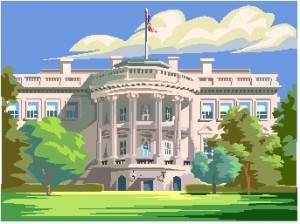“Ability to Repay” Rule Could Prompt More Foreclosures
On April 26, 2012 the Kansas City Star published a column from the Philadelphia Inquirer’s Al Heavens analyzing the federal government’s new “ability to repay” rule. This rule was part of the Frank-Dodd financial reform act of 2010 aimed at getting rid of high-risk mortgages and cleaning up the home lending industry. Among other things the Frank-Dodd legislation essentially put an end to risky mortgage products like interest only and negative amortization loans.
While parts of 2010 legislation have proved beneficial to borrowers, the ability to repay rule is being criticized by many in the industry as being too restrictive and having the potential to cause a second round of massive foreclosures in the near future. According to Heavens, “Dodd-Frank mandated…a rule requiring institutions that place securities in the asset-backed secondary market to have a financial stake in ensuring that mortgage products are quality products.”
In plain English what this rule states is that if a mortgage lender is going to package a group of mortgages together and sell them as secondary securities to other investors, that bank must retain some sort of financial interest in the package. The thinking here is that if banks still have a financial interest they will go the extra mile to make sure all the mortgages they sell are quality mortgages.
“In typical government fashion, they will create a solution to a problem that doesn’t exist,” PA mortgage lender Jerome Scarpello told Heavens. “The subprime loans and no-income-verification loans are gone. The underwriting criteria currently in place (are) hard enough without smothering the little improvement I see in the market.”
If Scarpello and other critics of the rule are correct, banks will become even more cautious about mortgage lending to anyone with less than stellar credit. Those right on the edge will be pushed into riskier loans with less reputable mortgage lenders as a result. If the housing market sees too many loans made under those circumstances it could very well cause a secondary collapse 5 to 10 years down the road.
Washington the Shortsightedness
The question for mortgage lenders here is whether or not Washington is being shortsighted in its efforts to help stem the foreclosure mess. On the one hand it would seem that more restrictions on mortgage lending are appropriate given the circumstances. But strict lending practices were already in place before Congress intervened back in the 1990s.
Just as an example, it used to be that mortgage lenders could not repackage mortgages and sell them to investors. That in itself was a good form of self-regulation that prevented risky lending practices. Now this new rule might be going too far in the other direction by completely cutting off any willingness among banks to offer standard mortgages.
Mr. Scarpello is correct in his assertion that banks no longer offer subprime and no-verification loans. Just the elimination of those two options keeps most risky borrowers out of the marketplace by default. If this new rule funnels those with average credit toward more costly mortgages it will have the opposite effect than was intended. At the very least, it may prevent future home buyers from purchasing. At worst it could wind up causing more foreclosures by forcing people to take mortgages they can’t afford.


Comments
“Ability to Repay” Rule Could Prompt More Foreclosures — No Comments